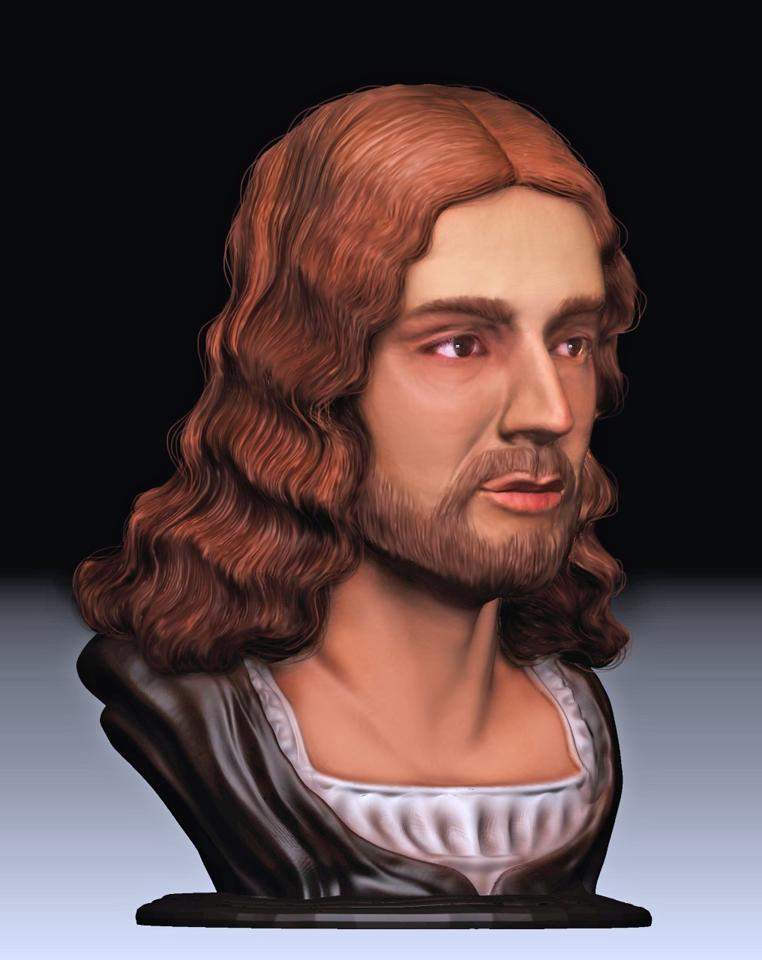The Center for Molecular Anthropology for the Study of Ancient DNA of the Department of Biology at the University of Rome Tor Vergata, in collaboration with the Vigamus Foundation and the Raphael Academy of Urbino, has carried out research that has led to the 3-D reconstruction of Raphael Sanzio’s face. In fact, the analysis of the plaster cast of Raphael’s skull made in 1833 by Camillo Torrenti has been completed: it has been established that the skeleton exhumed from the tomb in the Pantheon in the 19th century belongs precisely to the Urbino artist. From this discovery, it is possible to continue with future molecular studies of the skeletal remains to gain further insight into the artist’s DNA.
The identity of the remains preserved in the Pantheon tomb had not yet been ascertained: “A plaster cast of Raphael’s skull produced by the moulder Camillo Torrenti in 1833 was used,” explained Luigi Bravi, president of the Raphael Academy in Urbino, “on the occasion of the exhumation of the artist and now on display at the Casa Natale di Raffaello Museum owned by the Raphael Academy.”
“Until now, despite the accuracy of the investigations carried out in that year (1833) by the anatomist Antonio Trasmondo, the main architect of the last exhumation of Raphael, performed with the unresolving methods of the time but cutting-edge for the time, there was no certainty that the remains found and preserved in the Pantheon were really those of Sanzio,” commented Mattia Falconi, associate professor of molecular biology at the University of Rome Tor Vergata.
Thanks to this analysis on the cast, it was possible to reconstruct Raphael’s face in 3D in a very realistic way. “An interdisciplinary technique capable of recreating with good approximation, based solely on the morphology of the skull, the face of a person at the time of his death. This procedure has been widely used to unveil the faces of cranial remains of archaeological and historical significance, as well as for identification when used in forensics,” said Cristina Martinez-Labarga, associate of Forensic Anthropology at Tor Vergata, and Raoul Carbone, 3D Graphics Applied to Forensic Science, president of the Vigamus Foundation.
Thus, for thefirst time there is concrete evidence that the skeleton exhumed in 1833 in the Pantheon belongs to Raphael. First of all, the biological profile has been identified: “The morphological and metric analysis of the cast preserved at the artist’s birthplace allowed us to establish that the skull, showing physical characteristics compatible with the character’s appearance, could belong to Raphael Sanzio, thus justifying an eventual 3D reconstruction phase of the face. The final results obtained are consistent and completely superimposable with the profile of the great Urbino that has been transmitted to us by historical evidence and his artistic works,” noted Professor Falconi. “Possible future molecular studies on the skeletal remains will be able to determine some DNA-related character traits of the personage such as phenotypic traits (eye, hair and complexion color), geographical origin and the presence of possible genetic markers that predispose for diseases,” concluded Olga Rickards, professor of Molecular Anthropology at Tor Vergata University.
 |
| This is what Raphael's face looked like. Reconstructed in 3D what the painter looked like |
Warning: the translation into English of the original Italian article was created using automatic tools. We undertake to review all articles, but we do not guarantee the total absence of inaccuracies in the translation due to the program. You can find the original by clicking on the ITA button. If you find any mistake,please contact us.